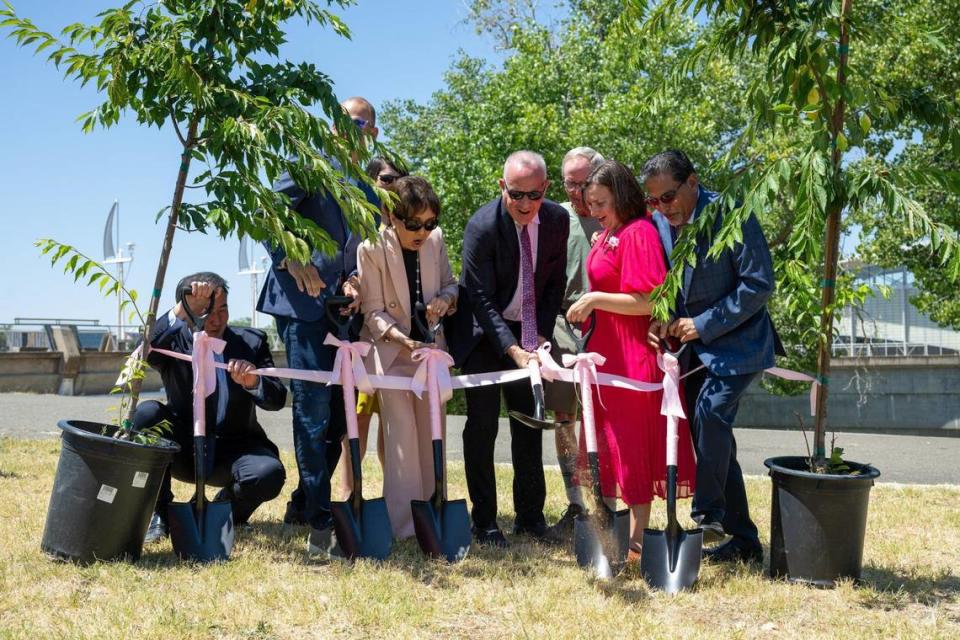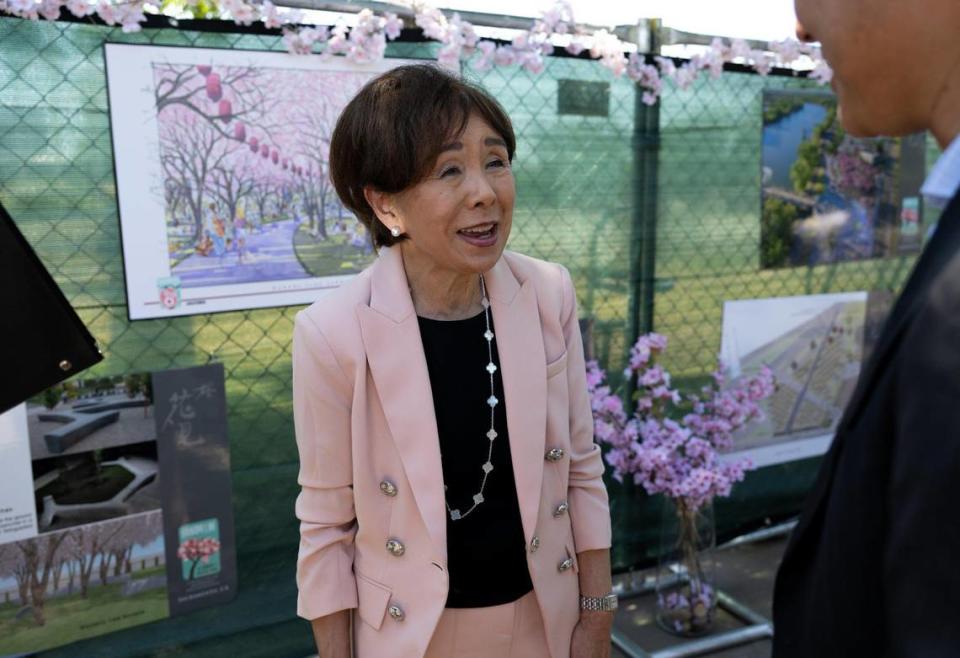Cherry blossoms will bloom along Sacramento’s waterfront, a nod to city’s deep Japanese roots
- Oops!Something went wrong.Please try again later.
At the turn of the 20th century, Japanese Americans settling in the city had a special name for Sacramento. Merging their community’s appreciation for the cherry blossom tree, or sakura, they called it: Sakuramento.
Now, a project aiming to honor them and their descendants’ contributions to the capital city has broken ground in Robert T. Matsui Park. Dozens of the iconic cherry blossom trees, public art and valuable shade will soon accompany the riverfront from Old Sacramento to the American River, supporters of the project announced at a groundbreaking Thursday.
Called the Hanami Line, the project draws from a common practice known as hanami or “blossom watching,” practiced by many Japanese communities and others across the world. Spearheaded by the nonprofit Sacramento Tree Foundation, it’s projected to span 1½ acres to connect the waterfront, the Sacramento River I Street Bridge and other development projects in the Railyards.
“This is where Sacramento began: the confluence of two great rivers,” said Rep. Doris Matsui, D-Sacramento, an honorary co-chair of the project’s campaign committee, at the groundbreaking. “That defines us here and everything that we’ve done.”

The park is named for her late husband, Bob Matsui, who sat on the city council before representing Sacramento in Congress from 1979 until his death in 2005. The park itself is a stone’s throw from the city’s once-bustling Japantown, whose population once rivaled Los Angeles and San Francisco’s similar enclaves.
It’s also a common tradition for many travelers to Japan or Washington, D.C., famed for its cherry blossoms, to appreciate the trees’ vibrant colors and shade. The flower itself has varied meanings for Japanese cultures, but some treat it as a reminder of the impermanence of life, given the tree’s typically short lifespan.
“This is again a reflection of how life is not permanent — we need to continue to change, and cherry blossoms reflect that,” said Lon Hatamiya, a member of the committee and the first Asian American to hold a cabinet-level position in state government. A former president of the Sacramento JACL, Hatamiya also fought for redress for Japanese Americans after their wrongful incarceration during World War II. “The Japanese American community has been so resilient and responsive and done so much for the fabric and culture of Sacramento.”
The project, expected to open to the public in 2024, has been in the works for around 10 years and has received support from UC Davis Health System, Caltrans, the city and millions of dollars generated through fundraising.
That helped push the public-private campaign past its initial goals. In all, donors gave $7.63 million to help seed the project.
Various Japanese-led institutions supported the project, too.

Many in attendance Thursday said they see the project as part of a broader recognition that Sacramento has been shaped by the many contributions and experiences of Japanese Americans, which continues to evolve.
“Wonderful things have happened in the Japanese American community probably within the last 15 to 20 years,” said Erin Komatsubara, a “long-time member” of the local Sacramento JACL chapter. Her family has been in Sacramento for four generations.
Her great-grandparents “built a home here” and she grew up at a time when she was the only Japanese American girl in class, she said. It led to the expected stereotypical jokes and taunts that she came to anticipate, but now, more than ever, she feels things are changing.
“My grandparents would be so happy and so shocked at the welcoming of diversity here in Sacramento.”

